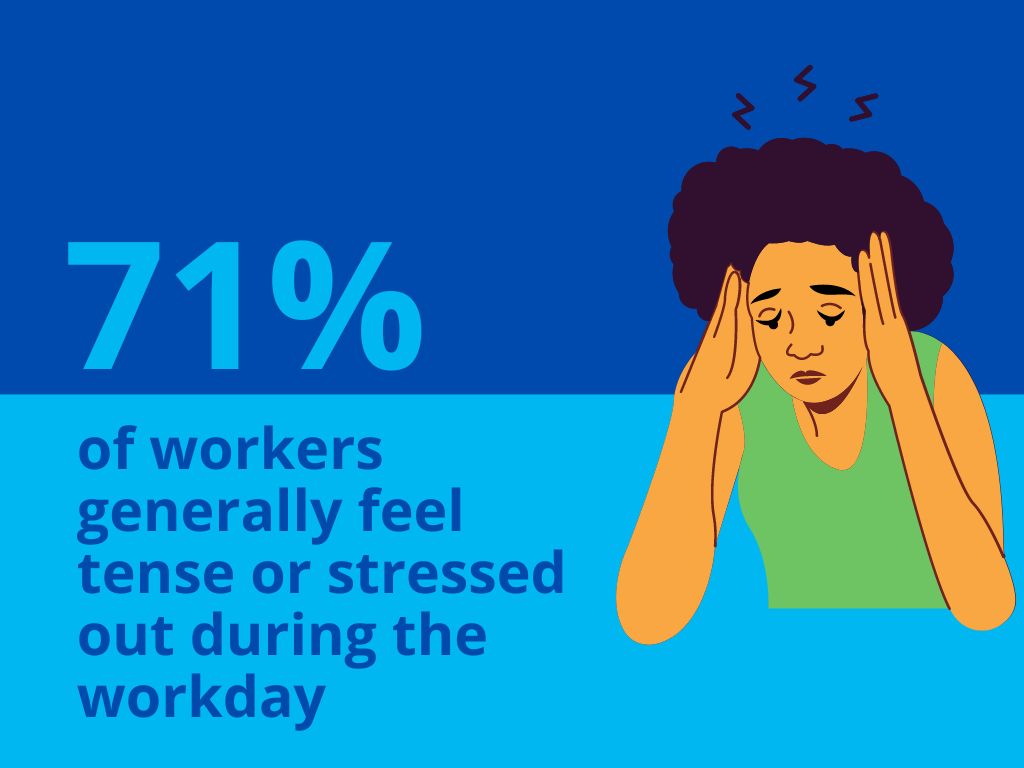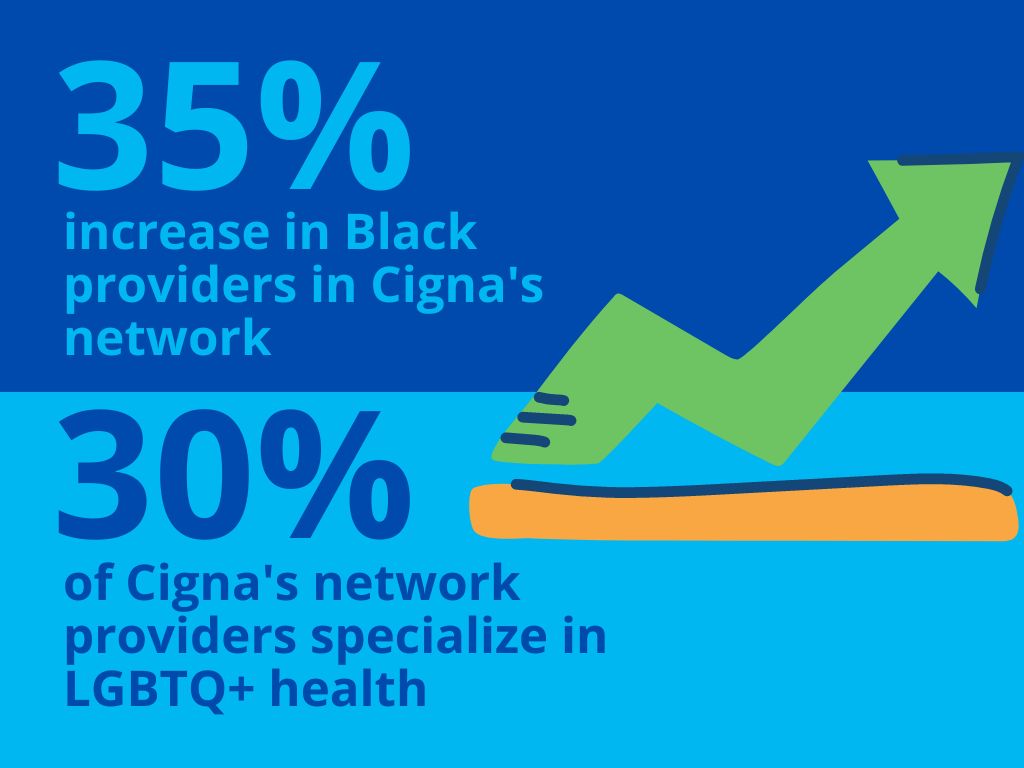With the inextricable link between well-being and employee retention thrust into the spotlight, it is now imperative to find innovative ways to invest in the continuum of mental health care so companies and their employees can thrive.

More than 4.4 million U.S. workers quit their jobs in March 2022 alone, and the data shows similarly high numbers in the months since. This streak of unprecedented churn has left employers struggling to manage what has become known as "The Great Resignation" in the wake of the COVID-19 pandemic.
With the inextricable link between well-being and employee retention thrust into the spotlight, it is now imperative to find innovative ways to invest in the continuum of mental health care so companies and their employees can thrive.
Why Supporting Your Employees' Mental Health Matters
The pandemic introduced stressors throughout people's lives, which has led to about 4 in 10 U.S. adults reporting they feel anxious or depressed. In a 2021 survey from Indeed, more than half of employees said they felt burned out, and more than two-thirds said the feeling had worsened throughout the pandemic.
It's not just COVID-19, either. From the economy to social justice issues, the times are turbulent for many. As a result, employees today seem to be more susceptible to mental health issues such as anxiety, stress, depression, and burnout.
 Mental health problems take a huge toll on individual workers, but they also impact employers. The 2021 Work and Well-being Survey by the American Psychological Association (APA) revealed that 71% of workers generally felt tense or stressed out during the workday, and they were three times more likely to seek employment elsewhere than those not feeling stressed. Employees who are struggling with mental health issues tend to be less focused, lack interest or motivation, and experience cognitive and physical fatigue.
Mental health problems take a huge toll on individual workers, but they also impact employers. The 2021 Work and Well-being Survey by the American Psychological Association (APA) revealed that 71% of workers generally felt tense or stressed out during the workday, and they were three times more likely to seek employment elsewhere than those not feeling stressed. Employees who are struggling with mental health issues tend to be less focused, lack interest or motivation, and experience cognitive and physical fatigue.
Clearly, this level of disengagement can lead to a decline in work performance, negatively affecting productivity, work quality, and customer expectations. By supporting early and proactive intervention for mental health care through a range of health benefit offerings, employers can help workers better cope and excel in the workplace now and into the future.
Understanding the Continuum of Mental Health Care
So what exactly does the full continuum of mental health care entail? It starts with building a benefits strategy that includes comprehensive support and innovative solutions to cover the full range of employee mental wellness needs—from digital self-help apps to facility-based care.
Here are some elements of a holistic benefits package that provides specialized support for employees of all backgrounds, identities, and abilities:
Self-Help Resources
- Digital apps: More and more evidence is showing that digital tools—such as self-help, self-management, and mindfulness apps—nurture employee well-being and can play a beneficial role in developing resiliency and addressing mental health challenges in the workplace.
- Preventive care: According to data from the McKinsey Global Institute, 70% of actions to improve health happen before someone seeks sick care. That means it's important to offer resources that help workers continually manage both their physical and mental health. Easy access to mental health information and screenings can result in early identification and treatment, which may prevent long-term disability.
Benefits and Workplace Health Programs
- Burnout prevention: In addition to fostering a culture that encourages discussions about mental health and seeking out resources, it's important to offer benefits that address pain points that increase the risk of burnout, such as financial wellness programs, caregiver support, childcare support, and schedule flexibility.
- Employee assistance programs (EAP): An EAP helps employees access professional support for mental health care, addiction recovery, community support, legal assistance, and more. Importantly, a robust EAP resource can assist employees in navigating the complexity of finding the right care with the right behavioral care providers, specialists, centers, etc.
- Employee wellness programs: Because wellness basics like exercise, good nutrition, and proper sleep play a crucial role in mental well-being, employee wellness programs should be considered a key component of the full continuum of mental health care.
- Benefits that improve job satisfaction: Beyond specific mental health services, employee feedback in the APA study indicates other areas companies should seriously consider in order to improve job satisfaction. These include opportunities for growth, better compensation, reduced workload, additional paid time off, and ensuring a safer work environment.
Provider Treatments
- Psychotherapy/Psychiatry: Access to licensed, trained behavioral health professionals that meet with patients one-on-one or in group settings to discuss their behavioral health issues and coping skills or prescribe necessary medications is essential to the treatment of mental health conditions. Psychotherapy and psychiatry can help employees better cope with their challenges and increase overall well-being.
- Virtual care: Since the explosion of virtual care early in the pandemic, its use for mental health and substance use treatment has remained strong and represents a growing share of all telehealth outpatient visits. Faster, easier access to mental health support via virtual care solutions will continue to be an expectation in the coming years, particularly for those who previously had difficulty accessing in-person care due to any number of circumstances.
- Crisis intervention: Support for a mental health crisis that leads to workplace violence, suicide threats, and other traumatic events should not be overlooked. Interventions can include a 24-hour hotline, walk-in clinics, facility and residential services, and the emergency department.
Engaging Your Employees in Mental Health Care
Setting up the benefits that enable access to mental health care services across the continuum is only the first step.
 It's just as important to promote awareness and engagement so that employees receive the right mental care services at the right time—but that can be a significant challenge.
It's just as important to promote awareness and engagement so that employees receive the right mental care services at the right time—but that can be a significant challenge.
In a McKinsey study conducted at the end of 2020, 96% of companies reported they were offering additional mental health resources; however, only 1 in 6 employees reported feeling supported.
One of the biggest barriers to mental health access is the stigma associated with mental illness. According to the National Alliance on Mental Illness, companies can destigmatize mental health in the workplace by taking the following four steps:
- Implement company policies that help employees receive the support they need, such as providing adequate insurance coverage.
- Encourage open dialogue about mental health, and be understanding if an employee needs accommodations or time off.
- Train management on how to address mental health and wellness in conversations related to performance and discipline.
- Avoid language that may reinforce stereotypes or further stigmatize mental health conditions.
Diversity is another obstacle to accessing needed mental health services. Employers can cultivate an inclusive culture—one that supports employees who are part of the LGBTQ+ community, who live with disabilities or cognitive impairments, or who represent ethnic and minority groups—by implementing initiatives that address their specific challenges and needs.
Company leaders also play a key role in modeling behaviors to cultivate a healthy culture and normalize mental health care. For example, they can model a healthy work-life balance and share with their team how they make time for family obligations and leisure activities. As they do so, however, it's important for leadership to remain mindful of how differences in compensation, workload, and other factors might impact their employees' ability to maintain a healthy lifestyle.
Creating New Opportunities for Growth
Cigna's approach to wellness starts with the idea that your employees need care services along a continuum—an approach that's backed up by proven prevention efforts that help decrease the need for acute care and chronic condition management down the road. Easy, engaging, and proactive care options, such as onsite clinics and fitness centers, biometric screenings, and well-being coaching, make healthy choices convenient for employees. What's more, we design solutions based on the unique needs and cultures of your employee population, and our analytics and reporting tools provide actionable intelligence to improve health plans and lower benefit costs as our partnership grows.
All this makes prioritizing your employees' mental health more than a compassionate thing to do; it's also a wise business decision. In a 2021 study commissioned by Cigna, survey data revealed that companies with a healthy workforce saw higher productivity, stronger staff morale, and greater employee retention and loyalty.
 Cigna strives to be the partner that helps employers better manage employee mental health by nurturing a positive, health-centered workplace culture that fosters engagement and drives business growth. For example, our digital partnerships with MDLIVE and Talkspace can empower workers to engage in their mental well-being. Our behavioral health solutions enhance this access with a mental health network that is more than 75,000 providers strong. To address the needs of at-risk communities, we continue to expand our network of providers to best serve the unique needs and identities of patients—for example, the number of Black providers in our network has grown by 35% since 2020, and 30% of our network providers specialize in supporting the LGBTQ+ community.
Cigna strives to be the partner that helps employers better manage employee mental health by nurturing a positive, health-centered workplace culture that fosters engagement and drives business growth. For example, our digital partnerships with MDLIVE and Talkspace can empower workers to engage in their mental well-being. Our behavioral health solutions enhance this access with a mental health network that is more than 75,000 providers strong. To address the needs of at-risk communities, we continue to expand our network of providers to best serve the unique needs and identities of patients—for example, the number of Black providers in our network has grown by 35% since 2020, and 30% of our network providers specialize in supporting the LGBTQ+ community.
By helping you support your most vital business asset—your people—across the full continuum of mental health care as well as providing access to the best medical care, together, we can create new opportunities for business growth.

Employee Health is Your New Growth Plan
Check out more leadership insights to discover new ideas on how to drive better health for both your employees and your business.